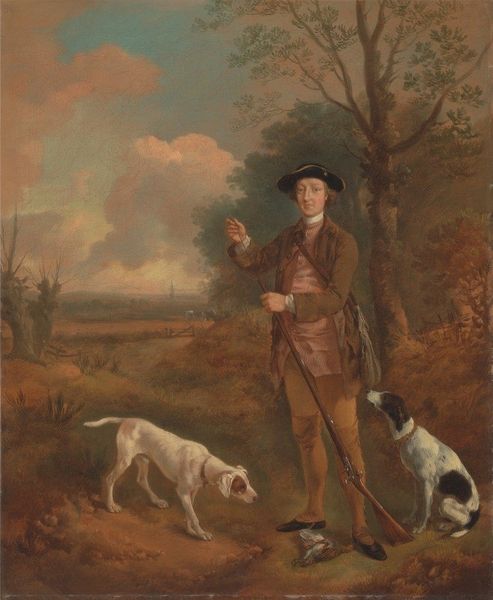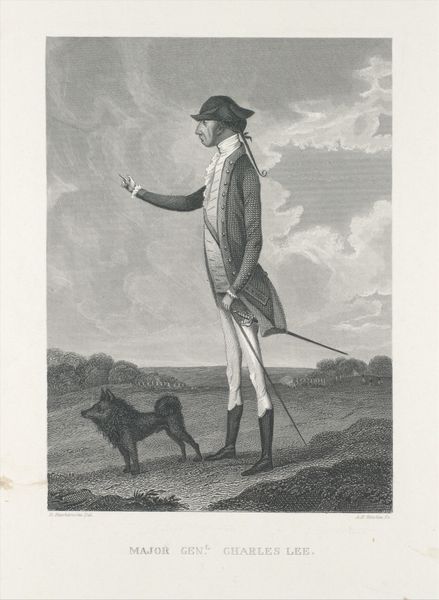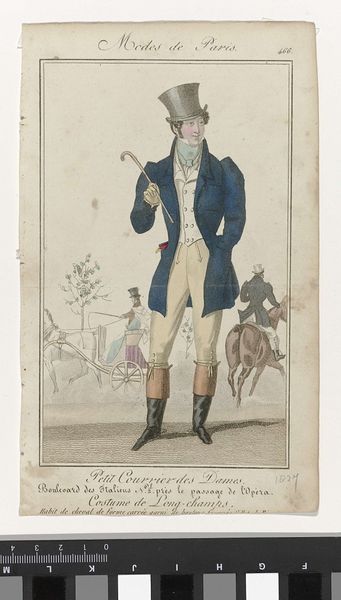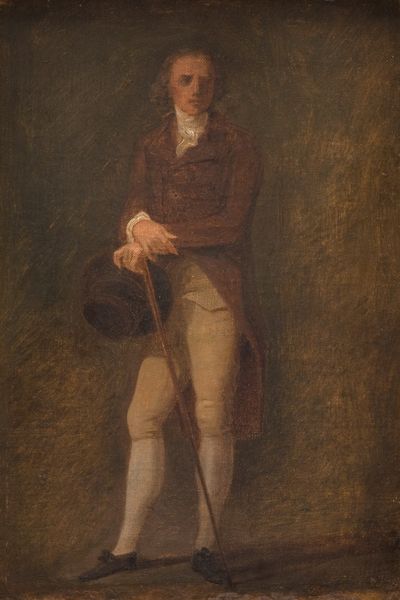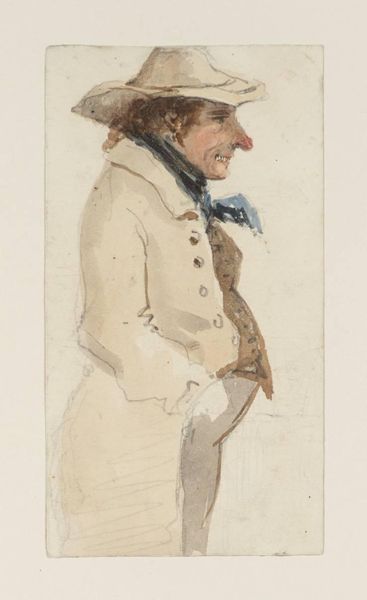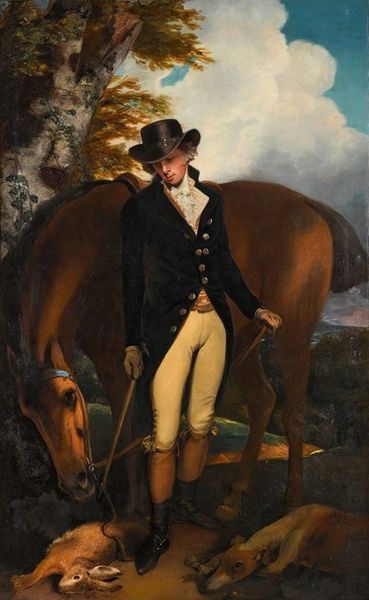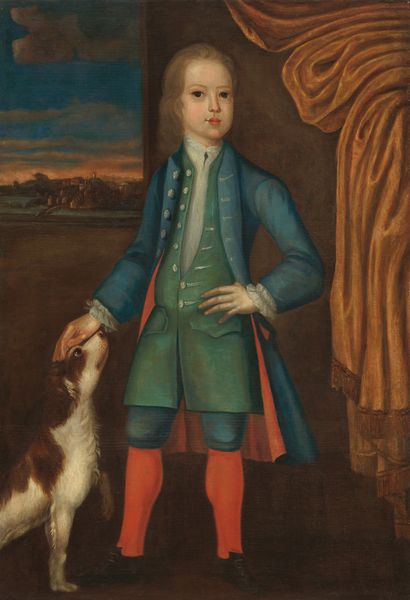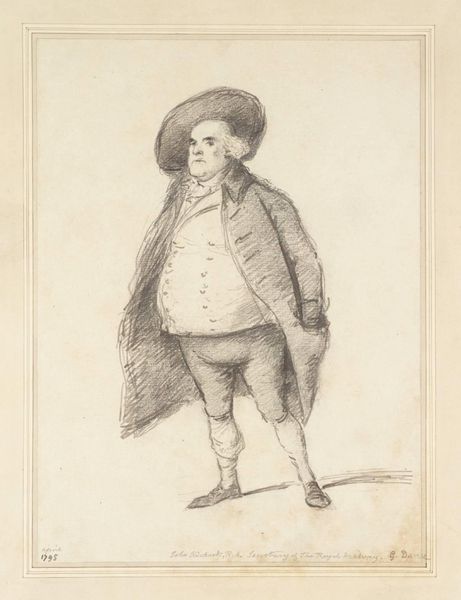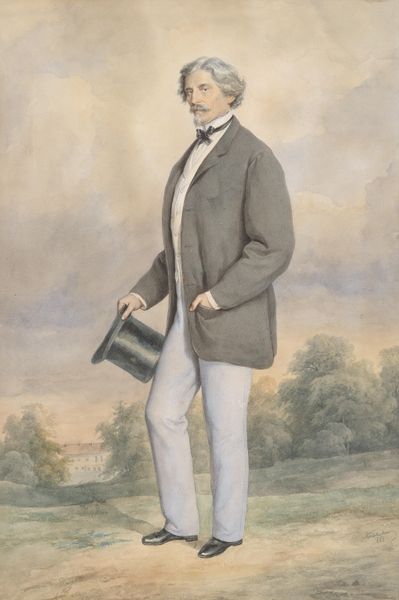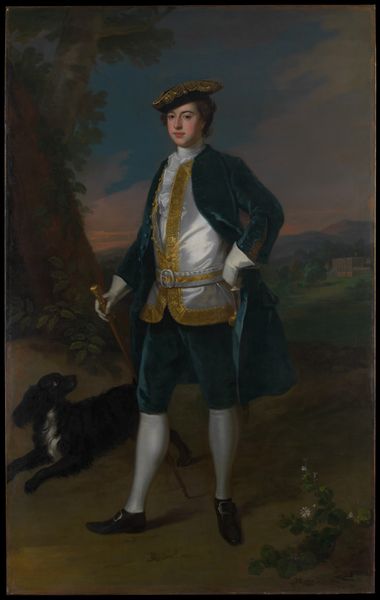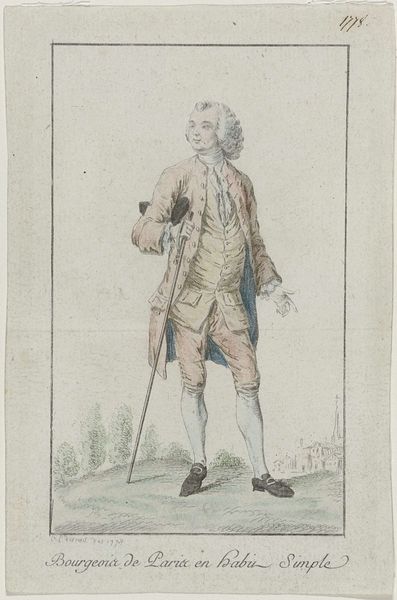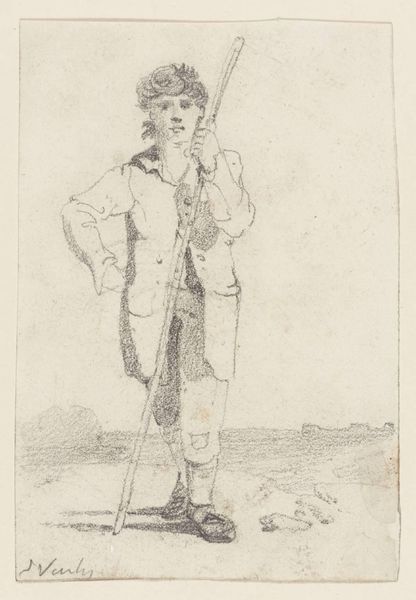
watercolor
#
portrait
#
landscape
#
watercolor
#
romanticism
#
watercolour illustration
#
genre-painting
#
watercolor
Dimensions: height 364 mm, width 257 mm
Copyright: Rijks Museum: Open Domain
Curator: Here we have a delightful watercolor from possibly 1798, titled "Portret van Izaak Bettink, in jachtkostuum" – that's "Portrait of Izaak Bettink, in hunting costume" – created by Rienk Jelgerhuis. Editor: My immediate impression is how delicately this work captures a particular kind of bourgeois masculinity at ease within its domain. There's a gentleness here that feels quite modern despite the period attire. Curator: It’s fascinating to situate Jelgerhuis’s work within the Romantic movement, where we start to see an idealization of nature and the individual experience. Consider how portraiture shifted, reflecting a move away from strict, formal depictions to capture something of the sitter's character and engagement with the natural world. Editor: And isn't that "engagement" a key point? This is Bettink posing within a stylized landscape – he's in hunting garb, yet there’s an almost theatrical artificiality. This portrait embodies an interesting interplay of power, leisure, and the commodification of the "natural" world, a constructed idea of "wilderness" ready for ownership. The dog, positioned subserviently, reinforces that relationship. Curator: Absolutely. And beyond the subject, look at the watercolor technique itself. Jelgerhuis employs these soft, almost pastel-like hues and blurred edges to create an atmospheric quality. It evokes a sense of the idyllic – not quite realism, but an interpretation. We see these Romanticized ideals playing out in gardens, parks, and country estates of the rising bourgeois. Editor: The fact that it's watercolor, and seemingly not a commission for display in a public space speaks to a degree of intimacy. Watercolor, even today, feels accessible; what does it communicate to you about Jelgerhuis, his approach, or about Izaak Bettink, by extension? Curator: I see that point precisely and this allows us to consider portraiture outside of notions of state, and patriarchy, seeing how those aspects are subtly performed through social activities of individuals who still lived according to its logic. Editor: A perfect nuance to hold in mind. Art history reveals itself best at the intersections of style, status, and the performance of identity. Curator: Agreed. It reminds us to look closely, and think broadly about what art reveals about a moment in time and the forces at work.
Comments
No comments
Be the first to comment and join the conversation on the ultimate creative platform.
